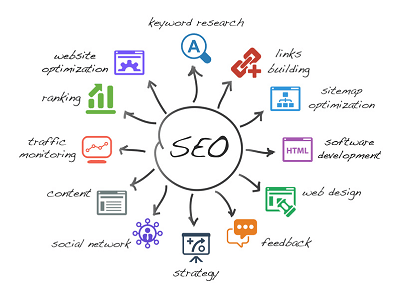Can search engines detect AI content?
Yes, search engines have the capability to detect AI-generated content, but the extent to which they can do so depends on various factors, including the sophistication of the AI-generated content and the algorithms used by search engines to identify such content.
AI-generated content produced by advanced models like GPT-3 can often closely mimic human-written content, making it challenging for search engines to distinguish between the two. However, search engines are constantly evolving their algorithms to detect and evaluate the authenticity and quality of content.
Here are some ways search engines might detect AI-generated content:
- Content Quality and Relevance: Search engines aim to deliver high-quality and relevant content to users. If AI-generated content lacks depth, coherence, or relevance to the search query, it might be flagged as low-quality.
- Plagiarism and Duplication: If AI-generated content is created using existing text from the internet, it could be flagged as duplicate or plagiarized content. Search engines use algorithms to compare content and identify similarities.
- Unnatural Language Patterns: Some AI-generated content might exhibit unnatural or unusual language patterns that human-generated content wouldn’t have. Search engines can analyze linguistic structures and patterns to identify such content.
- Contextual Inconsistencies: Advanced AI models might occasionally produce content that contradicts itself or provides inaccurate information. Search engines can cross-reference information to check for inconsistencies.
- Authorship and History: Search engines often consider the history and authority of the content creator. AI-generated content lacks a human history and profile, which might raise suspicion.
- Metadata and Structured Data: AI-generated content might lack appropriate metadata and structured data that human-created content would typically include. Search engines might use this information to assess the credibility of content.
It’s important to note that AI-generated content isn’t inherently treated negatively by search engines. If the content is valuable, relevant, and serves users’ needs, it can still rank well. Additionally, search engines continually update their algorithms to keep up with the changing landscape of online content.
Website owners should focus on creating content that genuinely adds value to users, regardless of whether it’s AI-generated or human-created. Ethical use of AI-generated content, transparency in labeling, and adherence to search engine guidelines are essential for maintaining a positive online presence.
Mobile SEO: How To Optimize Your Site For Any Device
As the use of mobile devices continues to surge, so too has the importance of Mobile SEO. Mobile SEO is an effective, targeted optimization strategy that focuses on optimizing a website for mobile users. By making small tweaks and changes on both the mobile and desktop versions of a site, businesses can create a better user experience for their mobile users and gain an edge on their competitors. The first step to optimizing a website for mobile devices is to ensure that it is fully responsive. Mobile devices are an ever-growing market, but without a responsive site, the mobile user experience suffers greatly. Responsive design will adjust the layout and content of a website to fit any device, and it is an essential step to reach mobile users. Once the design is optimized, there are several technical and content-related optimizations that can be done to create a better mobile experience for users. One important aspect of Mobile SEO is making sure the content of a website is optimized for mobile devices. This includes ensuring that page load time and speed are optimized for mobile users. Websites should only use high-quality images and plugins, as large files can slow down the page, ultimately effecting the user’s mobile experience. In addition, page content should be optimized for shorter viewing times by utilizing smaller paragraph sizes, bulleted lists, and larger fonts.
If a business has a dedicated mobile app, optimization should be prioritized there too. Having an app that is optimized for mobile devices will enable users to access the full range of content and services that the website offers. Apps should also be made available on both Android and iOS platforms to ensure they can reach the maximum number of users. Google’s mobile search engine is also important to consider. By creating content and optimizing for keywords specifically related to mobile users, businesses can capitalize on this platform to target more mobile users. Different strategies should be used for organic and paid campaigns to ensure maximum reach. Finally, local SEO is important for mobile search. Online marketers should be sure to optimize meta tags and content to include geographically relevant keywords to encourage potential customers to use a business’s services. Overall, optimizing a website for mobile users is an essential part of any online marketing strategy. By taking the time to make the necessary payment and technical optimizations, businesses can ensure their mobile users receive the best possible user experience.
How To Control Googlebot’s Interaction With Your Website
Googlebot is the web-crawling tool used by Google to index webpages which makes them available for search engine users. Googlebot is responsible for the performance of a website on Google. Googlebot interacts with websites according to rules set by the website owners. As website owners, it is important to control where and when Googlebot crawls a website in order to receive the best indexing possible.
1. Use a robots.txt
A website’s robots.txt file is a text document that instructs Googlebot and other search engine crawlers where and when it can or cannot access the content within the website. It is important to make sure this document is accurate, as any instructions which are incorrect may lead to content being overlooked during indexing.
2. Implement sitemaps
A sitemap is a file which provides a list of all the pages within a website, and instructions as to when and how they should be crawled. This is particularly useful for sites which have pages which are generally considered less important by search engines, such as product images or blog posts. Having a sitemap in place ensures that all important pages can be indexed by Googlebot.
3. Limit the number of pages indexed
Once the robots.txt is in place and a sitemap is implemented, users can limit the number of pages they want Googlebot to index. For example, if a website contains thousands of images or blog posts which they do not want to be included in search results, then they can specify the number of pages which should be indexed by Googlebot in the site’s robots.txt file.
4. Monitor web server logs
Googlebot can be monitored and identified through web server log files, which can be useful for monitoring the activity of the crawler. This helps website owners to track any errors or overloads which may occur during indexing, as well as taking any necessary steps to prevent them.
In conclusion, controlling Googlebot’s interaction with a website is essential to getting the best indexing possible. Website owners should ensure that all instructions provided to Googlebot are accurate by using a robots.txt file, implementing sitemaps, limiting the number of pages indexed, and monitoring web server logs. Doing this will help keep a website’s content safe and prevent it from being overlooked by search engines.
The WORST SEO advices
The internet has become an essential part of modern life. Businesses rely on their websites to reach customers and potential customers, and search engine optimization (SEO) is an important factor in getting visibility. Unfortunately, there is plenty of bad advice out there on what works with SEO and what doesn’t. Here are five of the worst SEO advice about that you should avoid:
1. Filling Your Content with Keywords: Stuffing your content with too many keywords is a sure way to end up at the bottom of search engine rankings. Not only will it make your website look spammy, as search engine algorithms have become much more sophisticated, they will recognize overly keyword-stuffed content and see it as an attempt to spam the search engine.
2. Not Creating Internal Links: Internal links help with user navigation on your website and can help keep them on your page longer. However, many people forget to create internal links as they assume if they link to the same page too often, then Google will see it as suspicious. That is not true! Links to other pages that are helpful and relevant help Google determine what a webpage is about and can be beneficial.
3. Not Optimizing for Mobile: Mobile optimization is a must in 2020. With the increasing usage of mobile devices for search and internet usage, it is essential that your website is optimized for mobile users. If it isn’t, then your website is likely to suffer from a decrease in search engine rankings.
4. Making Only Small Changes Over Time: SEO is a long-term investment, and gradual changes are necessary to ensure the success of your efforts. But, don’t fall into the trap of making only small changes over time. Big changes often have big effects on search engine rankings and can be beneficial in the long run.
5. Not Prioritizing Quality Content: Quality content is probably the most important factor for SEO success. Write original content that people want to read and content that will keep current visitors interested. Never copy content from other websites as this can do damage to your rankings.
In conclusion, these five pieces of SEO advice should all be avoided in order to have a successful website. Search engine algorithms are constantly evolving, and what works today may not work tomorrow. Only by following the best SEO practices and investing in quality content will you see long-term success.
Is click-through rate a valuable SEO metric
Click-through rate (CTR) is a metric that measures the percentage of people who click on a particular link or ad after viewing it. It is an important metric for SEO (Search Engine Optimization) because it helps to measure the effectiveness of an SEO campaign. When it comes to SEO, click-through rate (CTR) is one of the most important metrics. A good CTR shows that your content is relevant to the user and they are finding it useful. A high CTR means that the content is being viewed and more people are likely to click through to the page. It is also an indication of how well the page is ranking in the search engine results pages. CTR is a good indicator of how well your SEO efforts are working. If your SEO campaign is working, then your CTR should be higher than the average for the industry.
If your CTR is lower than the industry average, then it could mean that your SEO efforts are not working as effectively as they should be. It is also important to monitor the CTR of different keywords. If the CTR is high for certain keywords, then it could mean that you are getting more traffic to your website from that keyword. On the other hand, if the CTR is low, then it could mean that you are not targeting the right keywords for your SEO campaign. CTR is a valuable metric for SEO because it helps to measure the effectiveness of an SEO campaign. It can indicate if your SEO efforts are working and if you are targeting the right keywords. It is also a good indicator of how well your page is ranking in the search engine results pages. Monitoring CTR is a good way to make sure that your SEO efforts are working and that you are targeting the right keywords to get the most out of your SEO campaign.
Google Search to become more “visual, snackable, personal, and human”
Google Search is making a move to become more “visual, snackable, personal, and human”. The goal of this shift is to provide users with more intuitive and interactive search experiences. Google hopes to achieve this by making its search engine more visually appealing, providing users with more personalized and relevant results, and making the search process more human-like. One way in which Google is making its search engine more visual is by introducing a new feature called “visual snippets”. Visual snippets are small snippets of text that appear alongside search results and contain additional information about the topic. This feature helps to make search results more informative and easier to understand. For example, if a user searches for “hiking trails”, visual snippets may include information about the length of the trail, the difficulty level, or the nearby attractions. Google is also making its search engine more snackable by providing users with short, concise answers to their queries. The company has implemented a “featured snippet” feature, which provides users with a short and concise answer to their query. This feature can be used to quickly answer common questions or provide quick tips on a given topic. Additionally, Google has also implemented an “instant answers” feature which allows users to quickly find answers to simple questions without having to click through multiple pages. Google is also making its search engine more personal by introducing personalized search results.
This feature makes use of a user’s browsing history and other data to customize the search results for the user. For example, if a user searches for “hiking trails”, personalized search results may include trails that are close to the user’s location or trails that the user has searched for in the past. This feature can help users find more relevant and useful search results. Finally, Google is making its search engine more human-like by introducing “conversational search”. This feature allows users to ask natural language questions and receive conversational responses. For example, if a user asks “what is the best hiking trail near me?” the search engine will respond with a list of recommendations and additional information about the trails. This feature helps to make the search experience more conversational and personal. In conclusion, Google’s move to make its search engine more “visual, snackable, personal, and human” is an effort to provide users with more intuitive and interactive search experiences. By introducing features such as visual snippets, personalized search results, and conversational search, Google hopes to make its search engine more accessible and useful to users.
1 million URLs: How to pivot your SEO strategy when you reach enterprise level
When a business grows to enterprise level, it usually means that their web presence has expanded significantly and their SEO strategy needs to be adjusted to reflect the changes in their website size and complexity. One of the most important aspects of pivoting your SEO strategy at the enterprise level is to ensure that your website is optimized for search engine crawling. As your website grows, you’ll need to use different techniques to ensure that search engine crawlers can reach all of your pages. This includes using a sitemap to make sure that your website is well-structured and easy to navigate, as well as using HTML tags and meta descriptions to make sure that search engines can read and index your content. Another important factor to consider when pivoting your SEO strategy at the enterprise level is to focus on content quality. As your website grows, you’ll need to create content that is relevant to your target audience and that is optimized for search engines. This includes optimizing your content with targeted keywords, using internal links to make sure that users can easily navigate your website, and creating content that is engaging and useful for readers.
Additionally, you’ll need to ensure that your website is secure and that it meets the necessary technical requirements for SEO. This includes making sure that your website is fast and responsive, that it is HTTPS secure, and that it is mobile-friendly. All of these factors will help ensure that your website is properly indexed by search engines and that users trust your website. Finally, you’ll also need to monitor and adjust your SEO strategy as needed. This includes regularly monitoring your website’s performance, analyzing your competitors’ SEO strategies, and adjusting your strategy accordingly. By doing this, you can ensure that your website is always maximizing its potential and that it is always up-to-date with the latest SEO trends. By taking the time to pivot your SEO strategy when you reach enterprise level, you can ensure that your website is properly optimized and that it is reaching its full potential. This will help you stay competitive in the search engine rankings, attract more visitors to your website, and increase your overall ROI.
Virtual environment optimization (VEO): The next evolution of SEO
Virtual Environment Optimization (VEO) is an emerging concept that is gaining traction in the SEO industry. VEO is a subset of SEO that focuses on optimizing websites for the virtual environment. This includes optimizing websites for virtual reality (VR) and augmented reality (AR). VEO is important because it allows businesses to reach new audiences and gain a competitive edge in the market.
By optimizing websites for the virtual environment, businesses can create immersive experiences that engage users and encourage them to stay longer. Additionally, VEO helps businesses to stand out from the competition, as VR and AR are still relatively new technologies and can be used to create an innovative and engaging website. VEO requires a shift in the way websites are designed and developed. Websites must be optimized for the virtual environment, which means they must be built with VR and AR in mind.
This includes designing a website layout that is suitable for a virtual environment, as well as developing content and visuals that are immersive and engaging. Additionally, websites must be optimized for the various VR and AR devices that are available. VEO also requires businesses to monitor and analyze user behavior in the virtual environment. This allows businesses to gain insights into how users interact with the website and how to optimize it for better engagement. Additionally, businesses can use this data to optimize their website for the virtual environment and make it more user-friendly.
Get the latest SEO trends and predictions for 2023
As the search engine landscape continues to evolve, so do the SEO trends and predictions for 2023. As technology rapidly advances, so does the need for businesses to stay ahead of the curve in order to remain competitive. One of the biggest trends in SEO for 2023 is leveraging artificial intelligence (AI). AI is being used to analyze data quickly, allowing for a more personalized experience for consumers. AI-driven search engines such as Google and Bing are already leveraging AI to personalize search results, and this trend is only expected to grow in the coming years. AI is also being used to optimize content for better visibility, as well as to identify potential opportunities in terms of content, link building, and keyword usage.
Another trend that is expected to continue into 2023 is the use of voice search. Voice search technology is becoming more popular, with more people using it to search for information, products, and services. As such, businesses should optimize their content for voice search in order to increase visibility and reach. This can be achieved by using natural language, as well as by including long-tail keywords in content. In addition, content marketing will continue to remain a key factor in SEO for 2023. Content marketing involves creating high-quality content that is informative and helpful to consumers. This content should be optimized for SEO, and should be shared on social media and other digital platforms in order to reach a wider audience. Content marketing is an important part of any SEO strategy, and should be tailored to each individual business in order to maximize its reach and impact.
Finally, one of the biggest trends in SEO for 2023 is the shift towards mobile-first optimization. With more people relying on their mobile devices to access the internet, businesses need to ensure that their websites and content are optimized for mobile devices. This includes not only ensuring the website is responsive, but also that content is optimized for mobile devices and that any images are optimized for faster loading speeds.
Overall, the SEO trends and predictions for 2023 indicate that businesses need to stay ahead of the curve in order to remain competitive. Leveraging AI, optimizing for voice search, creating high-quality content, and optimizing for mobile devices are all essential components of a successful SEO strategy. By taking the time to understand these trends and implementing them into a comprehensive SEO strategy, businesses can ensure that they remain competitive in the ever-evolving search engine landscape.
YouTube SEO: How to find the best traffic-generating keywords
YouTube SEO is the process of optimizing your content to increase its visibility and attract more viewers. By optimizing your videos, you can increase the chance of ranking higher in search engine results, which will help your content reach more people and generate more traffic. To begin optimizing your content, the first step is to identify the best keywords for your videos. The goal is to find keywords that will provide the most relevant traffic to your video content. The best way to do this is to use keyword research tools such as Google AdWords or Moz Keyword Explorer. These tools will help you find the most popular and relevant keywords for your videos. Once you have identified the best keywords, you should then optimize your videos with those keywords.
This involves adding the keywords to the title, description, and tags of your videos. The title and description should be concise and relevant to the content of the video. It’s also important to include the keywords in the tags of your videos, as this will help the search engine to determine what the video is about. In addition to optimizing the content of your videos, you should also create high-quality backlinks to your videos. This can be done by including your videos in blog posts, articles, and other websites. This will help the search engines to understand that your video is relevant to the topics that are being discussed. Finally, you should also consider using video promotion tools such as YouTube Ads and other forms of online advertising. These tools can help you reach a wider audience and increase the visibility of your videos. By following these tips and using the right keywords, you can optimize your videos and increase their visibility in search engine results. This will help you generate more traffic and increase the number of people who watch your videos.













